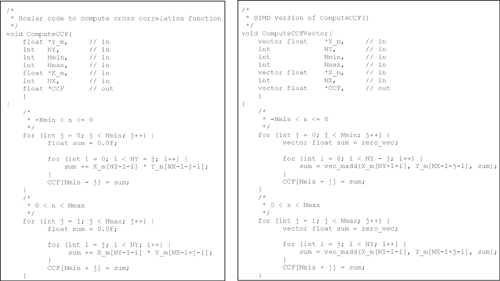Optimisation of multiplet identifier processing on a PLAYSTATION® 3 *
Masami Hattori 1 2 Takashi Mizuno 11 Schlumberger K. K. 2-2-1 Fuchinobe Sagamihara, Kanagawa 229-0006, Japan.
2 Corresponding author. Email: mhattori@slb.com
Exploration Geophysics 41(1) 109-117 https://doi.org/10.1071/EG09050
Submitted: 19 September 2009 Accepted: 4 December 2009 Published: 19 February 2010
Abstract
To enable high-performance computing (HPC) for applications with large datasets using a Sony® PLAYSTATION® 3 (PS3™) video game console, we configured a hybrid system consisting of a Windows® PC and a PS3™. To validate this system, we implemented the real-time multiplet identifier (RTMI) application, which identifies multiplets of microearthquakes in terms of the similarity of their waveforms. The cross-correlation computation, which is a core algorithm of the RTMI application, was optimised for the PS3™ platform, while the rest of the computation, including data input and output remained on the PC. With this configuration, the core part of the algorithm ran 69 times faster than the original program, accelerating total computation speed more than five times. As a result, the system processed up to 2100 total microseismic events, whereas the original implementation had a limit of 400 events. These results indicate that this system enables high-performance computing for large datasets using the PS3™, as long as data transfer time is negligible compared with computation time.
Key words: Cell, high-performance computing, microearthquake, microseismic, multiplet, PS3™.
Acknowledgments
We are grateful to Continental Resources Inc. for permission to use their data for our study and to publish these results. We thank Junichi Matsuda and Akinobu Mita of Fixstars Corporation for their kind assistance with the optimisation of the RTMI on the hybrid system. Thanks also to our colleague Philip Armstrong for useful discussion.
Arrowsmith, S. J., and Eisner, L., 2006, A technique for identifying microseismic multiplets and application to the Valhall Field, North Sea: Geophysics 71, V31.
| Crossref | GoogleScholarGoogle Scholar |
Waldhauser, F. M., and Ellsworth, W. L., 2000, A double-difference earthquake location algorithm: Method and application to the northern Hayward fault, California: Bulletin of the Seismological Society of America 90, 1353–1368.
| Crossref | GoogleScholarGoogle Scholar |
1 *Part of this paper was presented at the 9th SEGJ International Symposium (2009).

|

